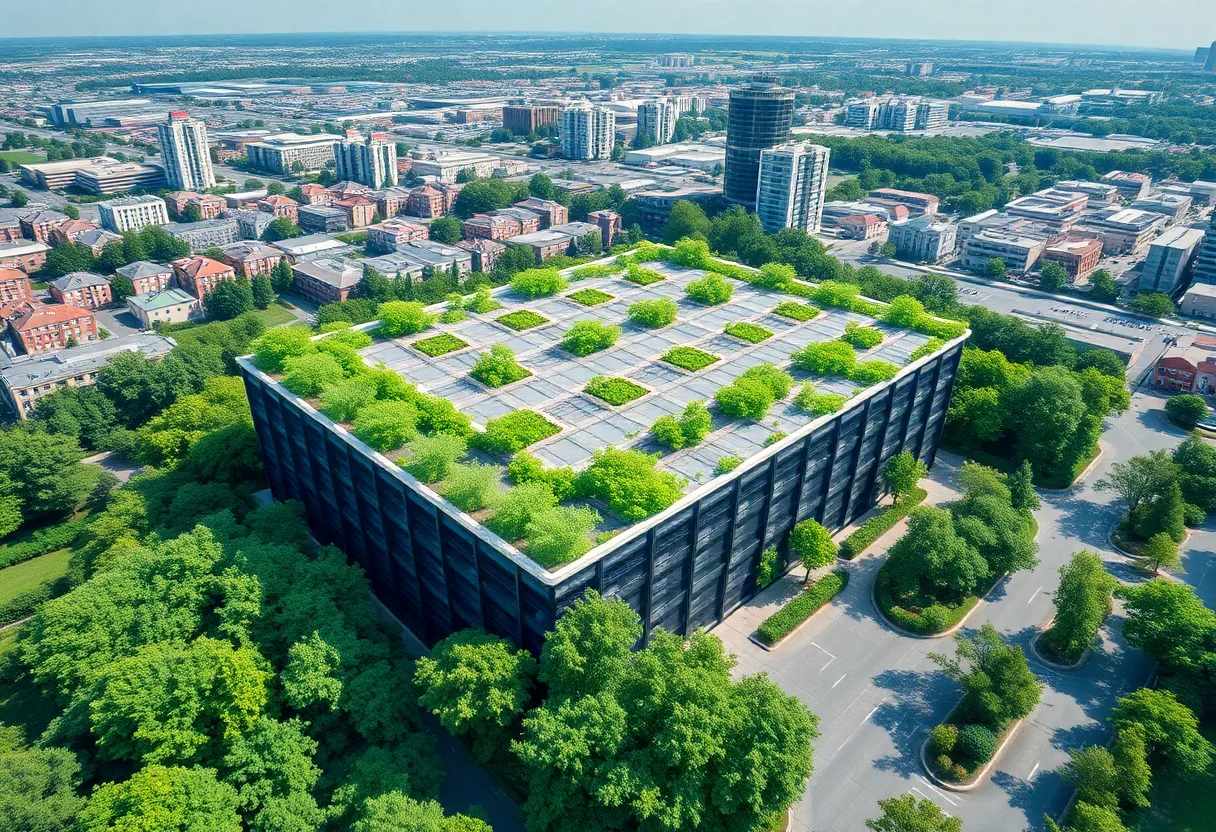News Summary
Georgia is witnessing a substantial growth in its data center industry, driven by the increasing demand for AI technologies. While the economic benefits are evident with job creation and infrastructure development, there are rising concerns regarding the environmental impact and resource consumption of these data centers. With projections indicating a massive uptick in water and energy demands, stakeholders are urged to find a balance between technological advancement and sustainability to protect local resources.
Georgia’s Data Center Boom: Economic Growth Meets Environmental Concerns
In the bustling state of Georgia, a notable shift is happening in the tech landscape. The data center industry is experiencing a considerable explosion in growth as these facilities flock to the state, eager to capitalize on its vibrant economy. However, this rapid expansion raises important questions about the impact on local resources and our environment.
What’s the Buzz About Data Centers?
So, what exactly are data centers? In simple terms, they are large facilities that house servers and other computing infrastructure essential for powering our connected world. From social media to online streaming services, data centers are behind much of the technology we rely on in our daily lives. But there’s a catch: these centers are incredibly resource-intensive, which has become a hot topic of discussion among experts and advocates for sustainability.
The surge in artificial intelligence (AI) has fueled an unprecedented construction boom in data centers all over Georgia. The excitement around AI as the next big thing means developers are racing to build new facilities to support this technological wave. Many experts outline that data centers are fundamental to the AI-driven economy we are entering. However, with great tech comes great responsibility, and this growth comes with significant resource implications.
Water and Energy—Is Georgia Ready?
Now, let’s talk about numbers. Large data centers often require over 200 million gallons of water each year—yes, you read that right! That staggering figure is roughly equivalent to the annual water consumption of nearly 2,000 Georgia homes. With *more than 25 new data center projects proposed since 2024*, the anticipated demand could push the annual water consumption to over 5.2 billion gallons. Given that Georgia is already among the top three states in the nation for data centers, this is raising eyebrows.
The current situation is drawing attention not only from developers but also from experts who warn that the existing infrastructure might not be ready to handle such incredible demand. Some caution that our power grids and water systems are being stretched thin, and there are concerns about the environmental impacts of this rapid growth.
Energy Demands on the Rise
Georgia Power recently went before a panel for an extensive eight-hour session discussing strategies to meet these growing energy demands. According to their forecasts, there will be an increase of around 8,000 megawatts required by the early 2030s. That’s a hefty number when considering the overall capacity of the state’s electricity grid! To meet the needs of these data centers, Georgia Power is preparing to build 1,000 miles of transmission lines and invest in various sources of renewable energy.
This ambition comes amid criticism from lawmakers and environmental groups who are worried about the approval process for utility bill increases and the balance between serving residential customers and large industrial users. Fortunately, to address these concerns, Georgia Power has announced new regulations designed to ensure that local residents and businesses are not left footing the bill for the power needs of these massive centers.
The Economic Upside
Despite concerns about rising energy and water demands, the economic benefits of data centers are notable. Estimates suggest that around 100 data centers are currently either functional or in the development stages across Georgia, fueling job growth and helping boost the local economy. Notable projects, like the ambitious Project Bunkhouse, aim to provide 8.6 million square feet of data center space by 2035. Similarly, the proposed White Oak Technology Park will introduce another 8.1 million square feet of infrastructure, potentially transforming the local employment landscape.
A Balancing Act Ahead
As Georgia continues to attract this wave of investment, finding a balance will be crucial. If the data centers keep coming, it might spur the need for legislative action concerning energy consumption and environmental impact assessments. How can we embrace technological innovation while being conscious of our planet? That’s the question everyone in Georgia is eager to answer.
As Georgia rides this data center boom, it will be essential to monitor how these developments unfold, taking into account both the untapped potential of the tech industry and the invaluable resources that make life in Georgia special.
Deeper Dive: News & Info About This Topic
- Georgia Recorder: Georgia Power’s New Long-Term Plan
- Bisnow: Developers Propose New Georgia Data Centers
- Data Center Dynamics: 86 Million Sq Ft Data Center Project
- 11Alive: Data Center Boom and Water Resources Investigation
- Data Center Dynamics: Plans for Data Center and Technology Park







